
Henry Graham Greene was an English writer and journalist regarded by many as one of the leading novelists of the 20th century.

The Third Man is a 1949 film noir directed by Carol Reed, written by Graham Greene, and starring Joseph Cotten, Alida Valli, Orson Welles and Trevor Howard, set in post-war Vienna. The film centres on American Holly Martins (Cotten) who arrives in the city to accept a job with his friend Harry Lime (Welles), only to learn that Lime has died. Martins decides to stay in Vienna and investigate his death.

Cards on the Table is a detective fiction novel by the English author Agatha Christie, first published in the UK by the Collins Crime Club on 2 November 1936 and in the US by Dodd, Mead and Company the following year. The UK edition retailed at seven shillings and sixpence (7/6) and the US edition at $2.00.

The Heart of the Matter (1948) is a novel by English author Graham Greene. The book details a life-changing moral crisis for Henry Scobie. Greene, a former British intelligence officer in Freetown, British Sierra Leone, drew on his experience there. Although Freetown is not mentioned in the novel, Greene confirms the location in his 1980 memoir, Ways of Escape.
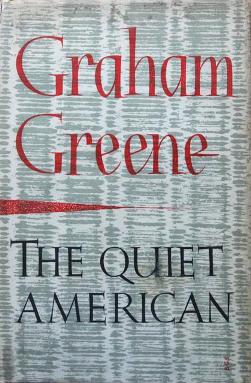
The Quiet American is a 1955 novel by English author Graham Greene.
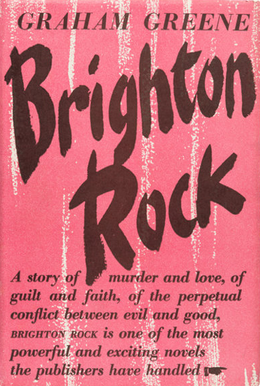
Brighton Rock is a novel by Graham Greene, published in 1938 and later adapted for film and theatre. The novel is a murder thriller set in 1930s Brighton. The first of Greene's works to explore Catholic themes and moral issues, its treatment of class privilege and the problem of evil is paradoxical and ambivalent.

The Comedians (1966) is a novel by Graham Greene. Set in Haiti under the rule of François "Papa Doc" Duvalier and his secret police, the Tontons Macoutes, the novel explores political repression and terrorism through the figure of an English hotel owner, Brown.

Nightfall is a 1956 American crime film noir directed by Jacques Tourneur and starring Aldo Ray, Brian Keith and Anne Bancroft.
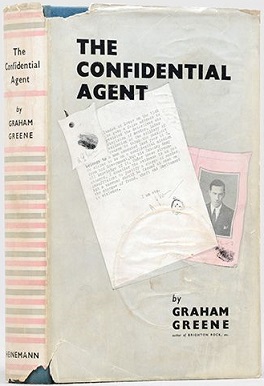
The Confidential Agent (1939) is a thriller novel by British author Graham Greene. Fuelled by Benzedrine, Greene wrote it in six weeks. To avoid distraction, he rented a room in Bloomsbury from a landlady who lived in a flat below him. He used that apartment in the novel and had an affair with the landlady's daughter. He wrote the book for money and was so displeased with his work that he wanted it published under a pseudonym. But critics took a far different view; The New York Times, for example, called the novel "a magnificent tour-de-force".

The Dante Club is a mystery novel by Matthew Pearl and his debut work, set amidst a series of murders in the American Civil War era. It also concerns a club of poets, including such historical figures as Henry Wadsworth Longfellow, Oliver Wendell Holmes Sr., and James Russell Lowell, who are translating Dante Alighieri's Divine Comedy from Italian into English and who notice parallels between the murders and the punishments detailed in Dante's Inferno.

The Feast of All Saints is a historical novel by American author Anne Rice published in 1979 by Simon & Schuster.
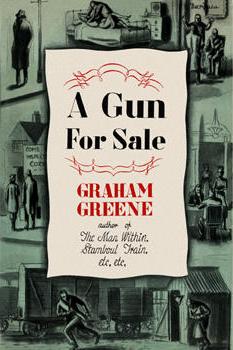
A Gun for Sale is a 1936 novel by Graham Greene about a criminal called Raven, a man dedicated to ugly deeds. When he is paid, with stolen notes, for killing the Minister of War, he becomes a man on the run. Tracking down the agent who double-crossed him, and eluding the police simultaneously, he becomes both the hunter and the hunted. The novel was published and filmed in the United States under the title This Gun for Hire.

Stamboul Train is the second significant novel by Graham Greene. Set on a train journey from Ostend to Istanbul, the book was renamed Orient Express when it was published in the United States. The novel appeared in 1932 and was Greene's first true success. It was taken on by the Book Society and in 1934 adapted as the film Orient Express.
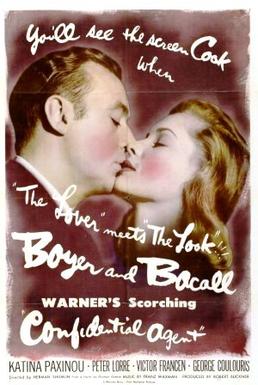
Confidential Agent is a 1945 American spy film starring Charles Boyer and Lauren Bacall which was a Warner Brothers production. The movie was directed by Herman Shumlin and produced by Robert Buckner, with Jack L. Warner as executive producer. The screenplay was by Robert Buckner, based on the 1939 novel The Confidential Agent by Graham Greene. The music score was by Franz Waxman and the cinematographer was James Wong Howe. The supporting cast included George Coulouris and Peter Lorre.
Graham Greene (1904–1991) was an English novelist regarded by many as one of the greatest writers of the 20th century. Combining literary acclaim with widespread popularity, Greene acquired a reputation early in his lifetime as a major writer, both of serious Catholic novels, and of thrillers. He was shortlisted, in 1966 and 1967, for the Nobel Prize for Literature. He produced over 25 novels, as well as several plays, autobiographies, and short stories.
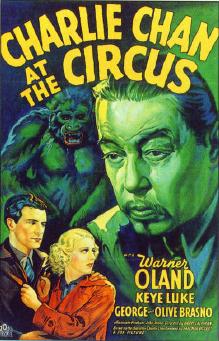
Charlie Chan at the Circus is the 11th film produced by Fox starring Warner Oland as Charlie Chan. A seemingly harmless family outing drags a vacationing Chan into a murder investigation.

El Señor Presidente is a 1946 novel written in Spanish by Nobel Prize-winning Guatemalan writer and diplomat Miguel Ángel Asturias (1899–1974). A landmark text in Latin American literature, El Señor Presidente explores the nature of political dictatorship and its effects on society. Asturias makes early use of a literary technique now known as magic realism. One of the most notable works of the dictator novel genre, El Señor Presidente developed from an earlier Asturias short story, written to protest social injustice in the aftermath of a devastating earthquake in the author's home town.

The Girl in the News is a 1940 British thriller film directed by Carol Reed and starring Margaret Lockwood, Barry K. Barnes and Emlyn Williams. It was based on the eponymous novel by Roy Vickers, released the same year.

It's a Battlefield is an early novel by Graham Greene, first published in 1934. Graham Greene later described it as his "first overtly political novel". Its theme, said Greene, is "the injustice of man's justice." Later in life, Greene classified his major books as "novels" and his lighter works as "entertainments"; he ranked It's a Battlefield as a novel and not a mere entertainment.

Rumour at Nightfall is the third novel by Graham Greene, published in 1931. Like his second novel, The Name of Action, it failed to repeat the success of his first novel, The Man Within; Greene was to suppress both his second and third novels.

















